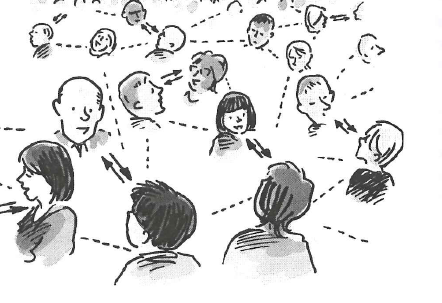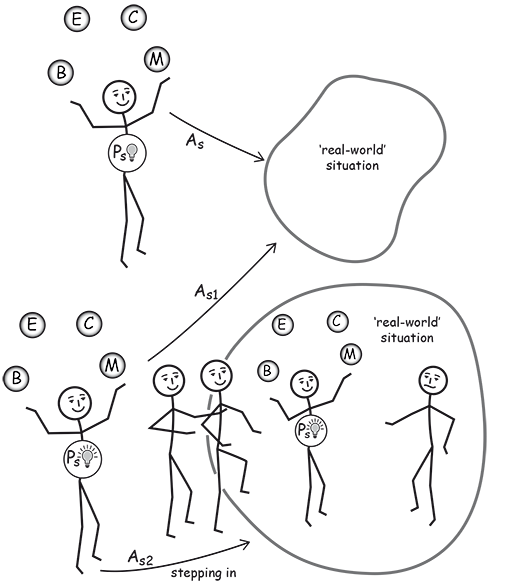5 The systems practitioner and systems of interest
Systems practice may be carried out individually or as part of a team. In doing action research – which is a form of managing – an important question is: action research conducted on us or with us?

The answer to the question, whether the action research is carried out by an individual or a group, leads to different modes of systems practice. These modes of practice are related to the choices the aware systems practitioner has at their disposal (Figure 9).
The mode of practice also relates to whether the systems practitioner attempts to take an objective stance, by standing outside the system of interest, or whether they see themselves as a co-creator of a system of interest with stakeholders. This is portrayed as the aware systems practitioner stepping into the so-called ‘real world’ situation with another stakeholder in Figure 9. The latter is the approach outlined by Patricia Shaw in her intervention from a complexity perspective. It is also the way in which the systems approaches mentioned in Week 7 can be contextualised.
One additional challenge you may face in developing your practice is to allow for the emergence of new insights from the use of systems methods in their entirety (i.e. as conceptualised by their developers) as opposed to picking and using parts of them. Based on my own experience I would argue for attempting them in their entirety first and until they begin to feel familiar, or embodied.

Activity 2 Looking back
- Look back through the notes you have made over the course of Weeks 1–8. Which ball(s) is the focus of which week?
| Week 1 Systems thinking in practice | |
| Week 2 Systems thinking and complexity | |
| Week 3 Identifying systems of interest | |
| Week 4 Representing systems of interest | |
| Week 5 Understanding multiple perspectives | |
| Week 6 Key systems thinkers | |
| Week 7 Systems thinking approaches | |
| Week 8 Becoming a systems practitioner |
Comment
Weeks 1–4 deal more with being (the B ball) though not exclusively, with a shift to engaging (the E ball) in Weeks 5 and 6, followed by contextualising and managing in Week 7 (the C and M balls), returning back to being a systems practitioner in Week 8.
| Week 1 Systems thinking in practice | B ball |
| Week 2 Systems thinking and complexity | B ball |
| Week 3 Identifying systems of interest | B ball |
| Week 4 Representing systems of interest | B ball |
| Week 5 Understanding multiple perspectives | E ball |
| Week 6 Key systems thinkers | E ball |
| Week 7 Systems thinking approaches | C and M balls |
| Week 8 Becoming a systems practitioner | B ball |
In Activity 3 you are going to think about your possible next steps in mastering systems thinking in practice.
Activity 3 Looking forward
Consider the following questions and note down your answers in the free response box.
- What are the most realistic steps you can take next to master systems thinking in practice?
- Are you excited or daunted by what you set out?
- Can you see what type of systems practitioner you would like to become?
